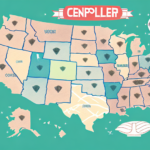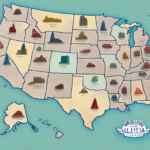Understanding FedEx Package Exceptions
When shipping valuable items across the country or internationally, relying on a trusted courier service like FedEx is essential. However, sometimes packages encounter unexpected challenges that can lead to frustrations and delays. These challenges, known as FedEx Package Exceptions, can significantly impact your shipping experience if not managed efficiently. In this article, we provide an in-depth analysis of FedEx Package Exceptions, including common causes, how to check for them, and strategies to avoid or resolve them effectively.
Common Reasons for FedEx Package Exceptions
Understanding the causes of package exceptions can help you prevent them in future shipments. Some of the most common reasons include:
- Incorrect Delivery Address: Mistakes in the recipient's address can lead to delays or misdeliveries.
- Missing Recipient Information: Lack of necessary contact details can hinder the delivery process.
- Insufficient Packaging: Packages that are not properly packed may be delayed or rejected.
- Weather-Related Disruptions: Inclement weather can disrupt transportation routes and schedules.
- Customs Clearance Delays: International shipments may face delays due to customs regulations and inspections.
Additionally, certain items are prohibited from being shipped via FedEx, including hazardous materials, illegal substances, and specific types of live animals. Always refer to the FedEx Prohibited Items List to ensure your package complies with shipping regulations.
How to Check and Resolve Package Exceptions
If you suspect your package has encountered an exception, the first step is to check its status using FedEx tracking. Follow these steps:
- Visit the FedEx Tracking website and enter your package tracking number.
- Review the Shipment Facts section for any exception alerts.
- Click on the exception alert to obtain detailed information about the issue and recommended actions.
If the reason for the exception is unclear or you need further assistance, contact FedEx Customer Service for support. They can provide specific guidance to help resolve the issue promptly.
Types of FedEx Package Exceptions
FedEx Package Exceptions can vary based on the underlying cause. Here are some common types:
- Address Correction Needed: Requires verification or correction of the delivery address.
- Package Not Due for Delivery: Indicates that the package is not scheduled for delivery on the expected date.
- Customs Delays: Pertains to international shipments held up during customs clearance.
- Delivery Restrictions: Occurs when delivery to a specific location is restricted or unavailable.
- Incorrect Recipient Information: Involves errors in the recipient’s contact or identification details.
- Recipient Location Issues: Addresses problems related to the recipient's address, such as building access or location accuracy.
Each type of exception may require different actions to resolve. For example, an address correction might require you to provide updated information, while customs delays may need additional documentation.
Preventing Future FedEx Package Exceptions
Proactive measures can significantly reduce the likelihood of encountering package exceptions. Consider the following tips:
- Verify Shipping Information: Double-check the recipient’s name, address, and contact details before sending your package.
- Use Proper Packaging: Ensure your package is securely packed according to FedEx’s packaging guidelines to prevent damage and delays.
- Select the Right Shipping Option: Choose a shipping service that matches your delivery timeline and package requirements.
- Utilize FedEx’s Hold at Location: This option allows you to hold your package at a FedEx facility, avoiding potential delivery issues.
- Avoid Prohibited Items: Ensure your package does not contain any items restricted by FedEx to prevent shipment rejections.
Implementing these strategies can help ensure your packages are delivered smoothly and on time.
Impact of Weather and Customs on Package Delivery
Weather-Related Disruptions
Weather conditions are a major factor that can cause package exceptions. Severe weather such as heavy rain, snow, hurricanes, or extreme temperatures can disrupt transportation routes and delay deliveries. To mitigate these impacts, consider the following:
- Monitor weather forecasts and schedule shipments accordingly.
- Opt for expedited shipping services during seasons prone to adverse weather.
- Use FedEx’s Hold at Location service to secure your package until conditions improve.
Customs Clearance Delays
For international shipments, customs clearance is a critical step that can lead to package exceptions if not handled properly. Common issues include incomplete documentation, non-compliance with destination country regulations, and duties or taxes owed. To streamline the customs process:
- Ensure all customs forms are accurately completed and included with your shipment.
- Familiarize yourself with the import regulations of the destination country.
- Consider using FedEx’s brokerage services to assist with customs clearance.
Filing a Claim for FedEx Package Exceptions
If a package exception results in loss or damage, you may be eligible for compensation from FedEx. To file a claim:
- Submit a written complaint to FedEx within the designated claiming period, which varies based on shipment type.
- Provide proof of loss, including receipts or documentation of the package’s value.
- Follow up with FedEx customer service to track the status of your claim.
Keep in mind that not all exceptions qualify for compensation. Exclusions typically include acts of nature, actions by public authorities, and issues arising from incorrect labeling or packaging. To maximize your chances of a successful claim, declare the full value of your package and ensure all documentation is accurate and complete.
The Importance of Accurate Shipping Information in Preventing Exceptions
Accurate shipping information is crucial for the timely and correct delivery of your package. Mistakes in the recipient’s details can lead to misdeliveries or delays. To ensure accuracy:
- Confirm the recipient’s full name, address, and contact number before shipping.
- Use clear and legible labels on your package to prevent scanning errors.
- Avoid abbreviations that can cause confusion, such as "St." for "Street."
Additionally, accurate information helps FedEx efficiently process and route your package, reducing the risk of exceptions and ensuring a smooth delivery experience.
Tips for Properly Packaging Your Items to Avoid Exceptions
Proper packaging is essential to protect your items and ensure they reach their destination without issues. Follow these guidelines:
- Secure Your Items: Ensure that the contents are firmly placed within the package to prevent movement and damage during transit.
- Use Appropriate Materials: Select packaging materials that are suitable for the type of items you are shipping. For fragile items, use cushioning materials like bubble wrap or foam inserts.
- Avoid Overpacking or Underpacking: Ensure your package is neither too bulky nor too lightweight, as both can cause shipping issues.
- Label Correctly: Clearly label your package with the recipient’s details and any necessary shipping information to avoid confusion.
By adhering to these packaging best practices, you can minimize the risk of package exceptions and ensure your items arrive safely and on time.
Conclusion
FedEx Package Exceptions can pose significant challenges to timely and accurate deliveries. However, by understanding the common causes, how to identify and address exceptions, and implementing preventative measures, you can enhance your shipping experience and reduce potential disruptions. Always ensure that shipping information is accurate, use proper packaging, and choose the appropriate shipping options to safeguard against unexpected delays. For more assistance, consult FedEx Customer Service or refer to the official FedEx guidelines on their website.








